One thing about the biomedical correspondences is that each major system in the body has every conformation represented in it. The nervous system, the immune system, the endocrine system, all of these important homeostatic systems are interwoven with the six conformations. Each conformation has a correlate in the nervous, the immune, the endocrine, and the psychological systems. All of the examples are just that, only examples, and are not meant to cover the entirety of the conformation within a biomedical framework.
Let’s take a look now at the yin conformations. If you haven’t read part 1 on the yang conformations you can go here.
Taiyin
Taiyin is the first of the yin conformations and is associated with the environmental influence of damp. Characteristic signs and symptoms are bloating, lack of appetite, water retention, and chronic loose stools, and sometimes undigested food in the stools. Chronic congestion, excessive mucus, and heavy sensations in the head or body are also typical Taiyin symptoms.
Taiyin means greater yin and is associated with the inward movement of yin. It represents the physical matter that is necessary for life, and the ability to create this matter in order to replenish the body. Taiyin takes what Yangming has brought inside and transforms it into the self. Taiyin also holds this matter in place, creating stability in form and function and anchoring the lighter and more volatile yang energies.
Psycho-emotionally Taiyin is the substance of thought, emotion, and belief. Just as physical matter makes up the body, mental “matter” makes up the mind. The Taiyin is the incorporation of this mental matter into the structure of self-identity, the cementing of those beliefs that define who you are. Difficulty with substantiating the self leads to excessive rumination in an attempt to “digest” difficult thoughts, or depression and lethargy as the accumulation of undigested experiences begins to weigh you down.
Taiyin in a biomedical perspective corresponds closely with energy and weight regulation. This includes hormones such as insulin and glucagon from the pancreas, and thyroid hormone from the thyroid gland. Other hormones from the GI tract, such as orexin and leptin, are also involved. The nutrient quality of the blood and extracellular fluid is a function of Taiyin, which brings blood glucose, amino acids, and fatty acids into the sphere of this conformation.
Shaoyin
Shaoyin is considered the second yin conformation and is associated with the environmental influence of heat. This is different from fire because the nature of fire is to flare and burn, whereas the heat represented by Shaoyin is the steady, unwavering heat necessary for the maintenance of life. Shaoyin symptoms fall into two opposing categories: those related to lack of yang, and those related to lack of yin. Lack of yang leads to an underproduction of vital heat, and the person feels constant cold and fatigue. Lack of yin leads to a deficiency of containment for yang, and the person feels fatigue and restlessness at the same time, along with chronic dryness of the whole body.
Shaoyin means lesser yin and is associated with the pivoting of yin between the interior and the exterior. It is considered by some to be the deepest layer of the body, and represents the basic life force, as well as the foundation for consciousness. If we consider human beings to be the containment of spiritual forces within a material body, the Shaoyin represents this dynamic, as it is both the container as well as the contained. It is the ability of yin to accept and release the yang in the dance of life.
Psycho-emotionally the Shaoyin is the foundation for the most basic drives of life: desire, and aversion. Existential fear, and its opposite – wonder – belong to the Kidney, one pole of the Shaoyin. Creative inspiration, and its extreme – mania – belong to the Heart, the other pole of the Shaoyin. We see the foundation of the self, both at an existential level and at a creative level, represented by this conformation.
Biomedically Shaoyin aligns closely with the central nervous system and the brain. The integrity of this system is represented in the Shaoyin. Our basal metabolic rate, maintained by the mitochondria, could also be a representation of this conformation.
Jueyin
Jueyin is the last of the yin conformations and corresponds with the environmental influence of wind. The nature of wind is to move, and characteristic symptoms involve uncontrolled movement in the body. This can be incessant diarrhea or vomiting, volatile emotions, tremors or twitching, any symptom that suddenly appears and disappears, or the appearance of opposite symptoms at the same time (like hunger and nausea simultaneously). When yin and yang functionally separate, wind is created, leading to physiologic chaos in the body. This can include issues like autoimmune disease, chronic infections, and autonomic dysfunction.
Jueyin means vanishing yin and is associated with the outward movement of yin, in contrast to Taiyin. The represents the ability to convert yin back into yang, to support the healthy expression of yang from a foundation of yin materiality. It is the renewal of life after a cold, dark winter, the investing of matter with energy and movement, as well as the containment of any excessive exuberance of yang.
At the psycho-emotional level the Jueyin is about containment of emotion. The ability to contain emotions until the time it is safe to release them is vitally important to social animals such as ourselves. The Jueyin also contains and protects the Heart, safeguarding contact with the Heart to what will nourish and support it and protecting against emotional threat. When containment fails either there can be a complete withdrawal, or emotions will escape and cause a feeling of being out of control.
A biomedical perspective on the Jueyin centers on balance, especially of the autonomic nervous system. The types of Jueyin disharmonies that involve chaos often present with dysregulation of the nervous system, with sudden spikes and drops in both the sympathetic and parasympathetic that lack any kind of smooth transition. Characteristic opposite type symptoms, like hunger with nausea, or drenching sweats with lowered body temperature, indicate serious autonomic disharmony. Biomedicine unfortunately cannot explain these types of states very well.
I hope you enjoyed this very brief introduction to the six conformations. I will be referencing these two posts in many of my future writings. Coming up, I’ll be examining the four earth organs according to the yearly calendar.



